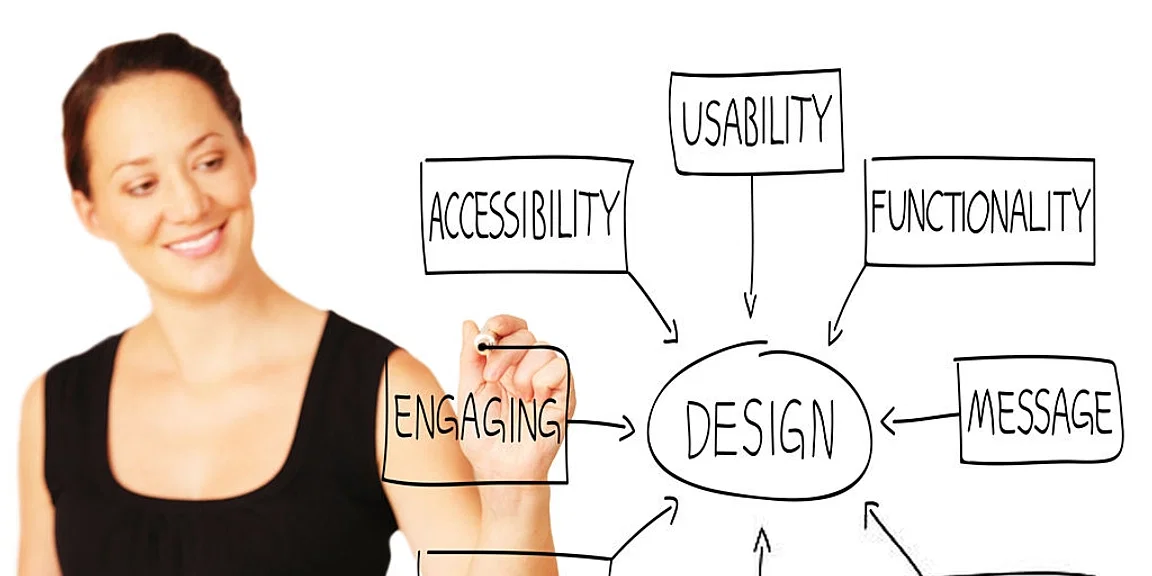Web design is a crucial aspect of creating a successful online presence. It encompasses various skills and disciplines aimed at producing visually appealing, user-friendly, and functional websites. With the evolving landscape of web development, it’s essential to understand the different types of web design approaches that can be utilized to meet various objectives. In this article, we will delve into the three primary types of web design and explore their characteristics and applications.
1- Responsive Web Design:
Responsive web design (RWD) has gained immense popularity in recent years, primarily due to the proliferation of mobile devices and the need for websites to adapt seamlessly across different screen sizes. RWD focuses on creating websites that respond to the user’s behavior and environment based on screen size, platform, and orientation. The professional team of Web Design Bolton understands the importance of responsive design. They use a combination of design skills, coding expertise, and knowledge of user behavior to craft websites that not only look great but also provide an excellent user experience across different devices.
Key Characteristics:
a) Fluid Grids:
RWD employs flexible grid systems that allow website elements to adjust proportionally to the screen size, ensuring optimal layout and readability.
b) Flexible Images:
Images are scaled proportionally to prevent distortion and maintain visual integrity across various devices.
c) Media Queries:
By utilizing CSS media queries, RWD enables the selective rendering of website elements based on specific device characteristics.
Applications:
Responsive web design is ideal for websites that aim to provide a consistent user experience across multiple devices. Whether accessed on desktops, laptops, tablets, or smartphones, RWD ensures that the website adapts seamlessly to any screen size or orientation.
2- Adaptive Web Design:
Adaptive web design (AWD) takes a slightly different approach compared to responsive design. Instead of fluidly adapting to different screen sizes, AWD focuses on creating multiple versions of a website tailored to specific device categories. Each version is designed to deliver the best user experience for that particular device type.
Key Characteristics:
a) Device Detection:
AWD relies on server-side detection techniques to identify the device accessing the website and serve the appropriate version accordingly.
b) Predefined Layouts:
Different layouts are created for various device categories (e.g., desktop, tablet, mobile) to optimize usability and performance for each specific platform.
c) Customized Content:
AWD allows for the delivery of device-specific content, enabling tailored experiences based on user preferences and device capabilities.
Applications:
Adaptive web design is suitable for projects where tailoring the user experience to specific device categories is crucial. It provides greater control over how content is presented on different platforms, ensuring optimal performance and usability.
3- Single-Page Web Design:
Single-page web design (SPWD) involves the creation of websites that deliver all content on a single, continuous page. Instead of navigating through multiple pages, users scroll vertically to access different sections or information. SPWD relies on interactive elements and smooth scrolling to enhance user engagement.
Key Characteristics:
a) Scrolling Navigation:
SPWD replaces traditional navigation menus with smooth scrolling, allowing users to navigate through different sections of the website without reloading pages.
b) Dynamic Content Loading:
Content is loaded dynamically as users scroll, minimizing page load times and providing a seamless browsing experience.
c) Interactive Elements:
SPWD often incorporates interactive elements like animations, parallax scrolling, and anchor links to create an engaging and immersive user experience.
Applications:
Single-page web design is famous for projects that require a visually appealing and streamlined presentation, especially when the content is concise and can be effectively organized within a single page. It is commonly used for portfolios, landing pages, and product/service showcases. Whether you are a business owner or an individual looking to create a personal website, single-page design can be an effective and engaging option. If you have any questions or need assistance with implementing a single-page web design for your website, feel free to get your quote today.
Conclusion
In conclusion, web design is a dynamic field that offers various approaches to meet the diverse needs of online platforms. By understanding the three primary types of web design – responsive, adaptive, and single-page – designers can create websites that effectively engage users, deliver information seamlessly, and leave a lasting impression.
Responsive web design is essential in today’s mobile-centric world, ensuring websites adapt to different screen sizes and orientations. It provides a consistent user experience, enabling visitors to access content seamlessly across devices. Adaptive web design, on the other hand, offers a more targeted approach, tailoring the user experience to specific device categories. It allows for greater control over presentation and functionality, optimizing performance for each platform.
Meanwhile, single-page web design focuses on delivering concise and visually captivating content within a single, continuous page. With smooth scrolling and interactive elements, it creates an immersive and engaging experience for visitors, particularly for projects that require streamlined information presentation.
The choice of web design type depends on several factors, including the project’s objectives, target audience, and content structure. Designers must carefully consider these factors to select the most suitable approach. By doing so, they can create visually appealing, user-friendly, and functional websites that effectively communicate the intended message and drive user engagement.
Ultimately, successful web design goes beyond aesthetics; it encompasses usability, accessibility, and understanding the target audience’s preferences and behaviors. By leveraging the power of these three web design types, designers can craft online experiences that captivate users, facilitate seamless interactions, and leave a lasting impact.
ALSO READ: Benefits of using pdfs for web dependent business
